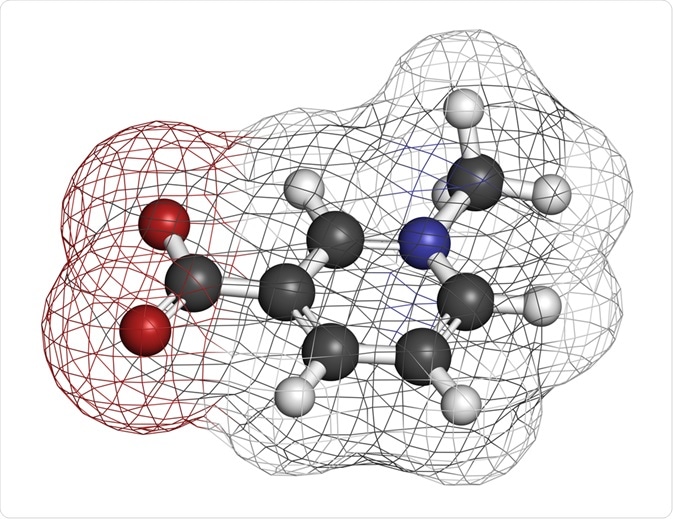Pharmacometabolomics is a branch of metabolomics, the disciple that quantifies and analyzes the metabolites existing in a biological sample.
Rapidly growing in popularity, pharmacometabolomics has already established itself in the fields of drug development and personalized medicine, where it is already helping make significant insights and furthering knowledge and product offerings in these sectors.

Image Credit: StudioMolekuul/Shutterstock.com
Metabolomics is the process of identifying, quantifying, and analyzing the metabolites in a fluid or tissue. It has been used to advance our understanding of several health conditions, particularly cancer, which has led to new research into innovative methods of diagnosis and treatment.
Pharmacometabolomics represents a specific area of metabolomics that is focused on using this analysis of metabolites to reveal how certain individuals are responding to treatment.
The metabolites that arise in the body’s tissues and fluids can uncover many factors that can be indicative of how a drug is working, such as its toxicity, how it is influencing target substances, the existence of secondary substances that may reveal the presence of certain activities, the existence of adverse effects (even those not yet presenting symptoms) and more.
Pharmacometabolomics can help identify people or populations who are most likely to respond to treatments. It can also help to highlight those who may be at risk of suffering from detrimental side effects.
Pharmacometabolomics can also help calculate dosage, as well as help scientists to make amends to the drug, optimizing its efficacy and minimize its associated side effects. It can help to speed up the process of converting candidate drugs from the research stage to clinical trials.
While this approach is still in its early days, with just a small percentage of studies using metabolomic principles, the technique has already significantly impacted on early-phase drug development as well as on personalized medicine.
The use of this approach is likely to continue to grow, with new therapeutic avenues being opened up as a result of this work.
How was pharmacometabolomics established?
While the concept of metabolomics is not new at all, with evidence showing that ancient Chinese medicine used multiple forms of body fluid testing to identify the presence of disease, metabolomics has made remarkable advancement only in the last few decades.
This is because of the sophisticated interactions between the multiplicity of metabolites and correspondent physiological and pathological conditions, and consequent reliance on advanced bioinformatics and robust analytical and computational programs.
It wasn’t until 1999 that the term “metabolomics” was coined, and the word “pharmacometabolomics” wasn't used until 2006 when it was used to describe how the study of the metabolome was used to investigate how liver damage was associated with paracetamol metabolism.
Since then, the approach has been developed so that it is now a reliable method of obtaining an organism’s biological fingerprint at a certain time point, which can identify casual factors (such as biomarkers) that can inform diagnostic and therapeutic methods.
Pharmacometabolomics and drug development
Early-phase clinical trials of drugs are when new candidate drugs are used in humans for the first time. Usually, small groups of healthy volunteers and patients are studied for what might be days or weeks to establish how the drug impacts humans before large scale trials are carried out. Pharmacometabolomics is used during this phase to collect as much detailed and accurate information as possible regarding how the drug interacts with the human body.
In these early-phase trials, scientists often have a limited amount of information regarding the potential toxicity and efficacy of the candidate drug.
Pharmacometabolomics can uncover this information early, saving the expense and risk of running large scale trials that may be ineffective or produce harmful side effects. This helps speed up the process of developing new drugs, as those that are not suitable are identified quickly so that resources are not wasted in the continuation of their investigation.
This can help effective drugs become identified and go to market fast, meaning that new and improved therapeutics are available to patients as soon as possible.
Pharmacometabolomics and personalized medicine
Traditionally, there has been little personalization in drug treatment. Patients are generally administered the same drugs as other patients with the same illness, although the response to drug therapies can be dependent upon subpopulation.
This means that the quality of treatment is less than it could be because patients may be administered with a drug that has a lower efficacy for them in comparison to others, or it could mean that a patient is subjected to adverse effects that other drugs may not elicit.
Prolonged treatment times lead to wasted resources and additional stress for the patient. Healthcare professionals want to avoid this. Thus, improving the quality of personalized medicine has become an area of focus over recent years.
Personalized medicine involves taking into account a person’s unique genetic and biochemical make-up, as well as their response to stimuli.
This understanding of stimulus-response is known as deep phenotyping, where metabolomics is used to measure how a patient responds to certain substances being introduced to the body.
This information can help inform physicians on how certain drugs will impact an individual, allowing them to tailor their treatment plan accordingly.
Sources:
- Burt, T. and Nandal, S. (2016). Pharmacometabolomics in Early-Phase Clinical Development. Clinical and Translational Science, 9(3), pp.128-138. https://www.ncbi.nlm.nih.gov/pmc/articles/PMC5351331/
- Kaddurah-Daouk, R., Hankemeier, T., Scholl, E., Baillie, R., Harms, A., Stage, C., Dalhoff, K., Jűrgens, G., Taboureau, O., Nzabonimpa, G., Motsinger-Reif, A., Thomsen, R., Linnet, K. and Rasmussen, H. (2018). Pharmacometabolomics Informs About Pharmacokinetic Profile of Methylphenidate. CPT: Pharmacometrics & Systems Pharmacology, 7(8), pp.525-533. https://www.ncbi.nlm.nih.gov/pmc/articles/PMC6118295/
- Kim, H. and Yoon, Y. (2014). Pharmacometabolomics: Current Applications and Future Perspectives. Translational and Clinical Pharmacology, 22(1), p.8. www.researchgate.net/.../270679846_Pharmacometabolomics_Current_Applications_and_Future_Perspectives
- Rattray, N. and Daouk, R. (2017). Pharmacometabolomics and Precision Medicine Special Issue Editorial. Metabolomics, 13(5). https://link.springer.com/article/10.1007/s11306-017-1191-1#citeas
Further Reading